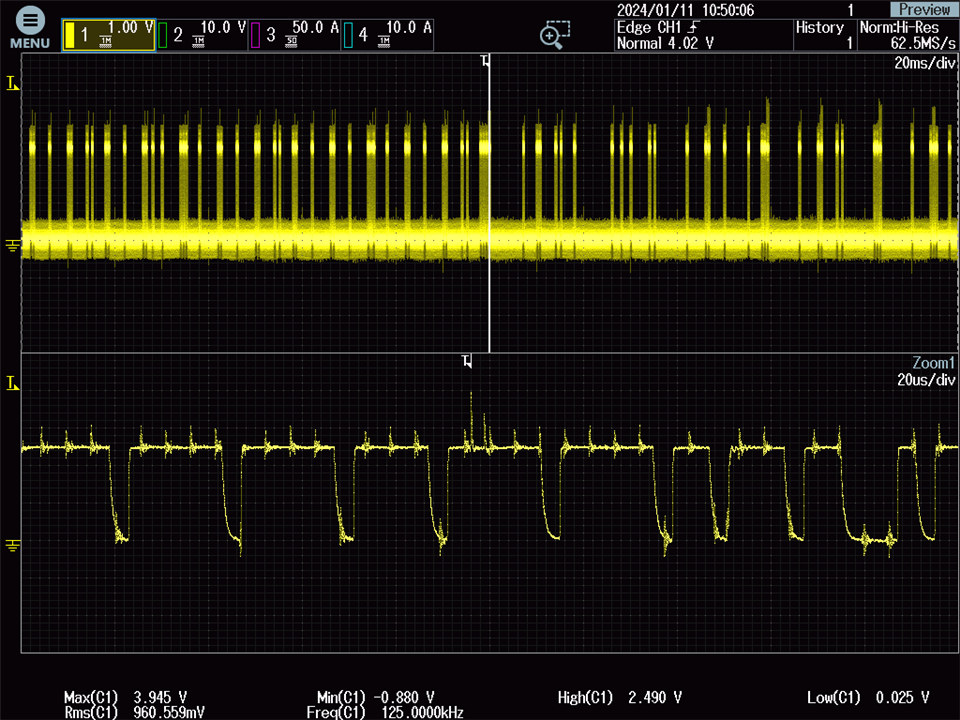Hi team
Customer use SN65hvd232 in the single phase inverter, they find when more than one CAN node attached to the CAN network, the differential voltage of CAN_H and CAN_L has some interfere on it, but if there is only one CAN device, the signal is good. Below is the waveform and schematic. 

Where should I check for this issue?
thank you
best regards
joe




